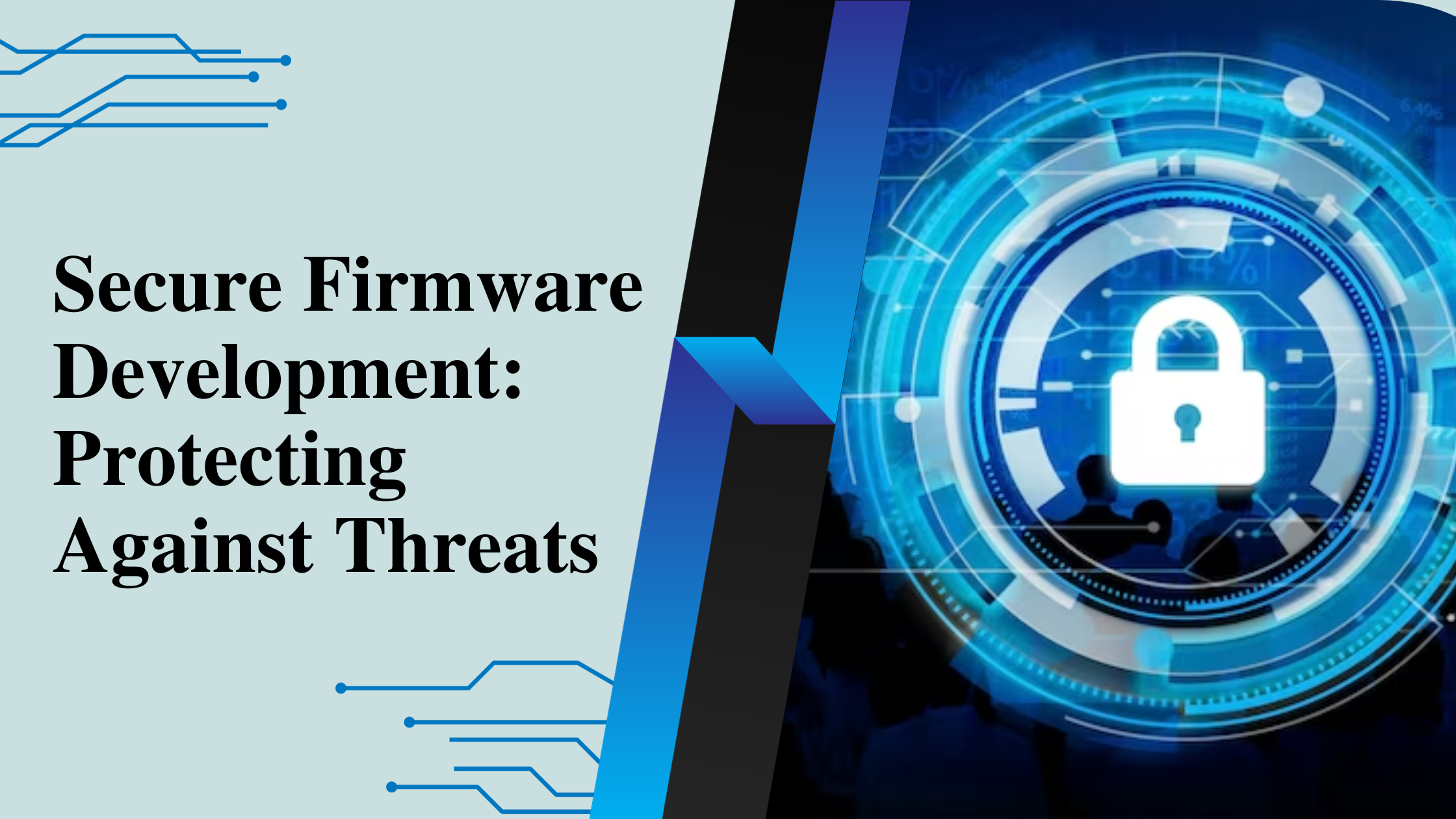In today’s connected contemporary world, the firmware performs a pivotal role in forming the basis of the functioning of all our electronic devices. Right from the firmware present in your smart thermostat to your car’s engine code, firmware remains modern technology’s unsung hero. Secure Firmware is very important for securing devices against a plethora of threats. In this article, we will throw light upon the importance of secured firmware development services as well as safeguarding measures against potential threats.
Apprehending Firmware And Its Vulnerabilities
Firmware is software that resides on hardware devices. It acts as a bridge between software and hardware and controls the device’s functions. Firmware can be found in numerous devices, like IoT devices, embedded systems, medical devices and router etc. Although firmware has plentiful uses, it isn’t immune to threats and vulnerabilities. The following are some of the common challenges that are associated with firmware security:
Inadequate Updates
Firmware are more susceptible to security breaches since their updates are less frequent as compared to software updates. The vulnerability may persist for extended periods even after being discovered, that tends to expose devices.
Lack Of Authentication
There is a possibility of unauthorized access if the firmware’s authentication mechanism is absent or is weak. Attackers can gain device control if the required authentication protocol is absent.
Code Injection
Firmware can be compromised by injection attacks such as SQL injection and buffer overflow. The after effects of such attacks involve data theft and unauthorized access control.
Hardware Credibility Issues
Sometimes, hardware vulnerabilities can lead to security risks, and this must be addressed in firmware security.
Weak Encryption
Sensitive data communicated between devices and servers can be altered by attackers if the encryption is weak or is absent.
Why Secure Firmware Development?
It is important to develop firmware securely because of the following:
User Data Confidentiality
Secure firmware development is needed for masking confidential data against unlawful access.
Secure Authorization
It is possible to safeguard devices through custom firmware development against unauthorized access causing data breaches and manipulation.
High Device Reliability
Device performance may be diminished due to security-related vulnerabilities. Cases of device crashes can be prevented with secure development.
Maintaining Customer Trust
A firm must and should avoid security breaches and tampering with secure development so as to protect its reputation and maintain customer loyalty.
Compliance Standards
Secure and compliant firmware development avoids legal issues and ensures that all electronic devices meet respective government regulations and standards.
Secure Firmware Development Best Practices
Developers need to follow the below best practices for for firmware security risk mitigation:
Recurring Updates
An easy-going firmware update mechanism for users should be provided by manufacturers for better security.
Prominent Authentication
Use two-factor authentication as well as username and password procedures for secured log in mechanism.
Code Review and Test
Regular automated testing and manual code reviews pinpoint vulnerabilities in the development phase.
Tenable Booting
Before firmware execution, use secure boot runs for its integrity verification and secureness.
Encryption Protocol
Stored and transiting data between devices and servers needs to be secured with powerful encryption.
Secure Hardware
Use only trustworthy hardware components and implement hardware security protocols to avoid issues related to hardware vulnerabilities.
Control Access
Access to modify devices and firmware must be restricted to authorized personnel strictly.
Penetration Testing
Regular assessment of the firmware’s attack resilience via penetration testing must be conducted to notify regarding vulnerabilities that may have been missed during development.
Threat Models
Security measures can be segregated on the basis of priority by developing a threat model that identifies and assesses the impact of potential vulnerabilities.
Standard Compliance
Development must be enforced while adhering to industry regulatory standards. This ensures that the developed firmware follows security benchmarks.
Secure Firmware Development Related Challenges
Although developing secure firmware is essential, it poses certain challenges:
Resource Scarcity
As we know that IoT devices and embedded systems have limited memory as well as processing power, thus, implementing security measures becomes a challenge.
Supply Chain Complexity
Secure firmware development involves various stakeholders, thus making the supply chain complex and posing issues in security coordination across it.
Legacy Systems
Lack of support for contemporary security features and other compatibility issues can make firmware upgradation in legacy systems difficult.
Continuous Monitoring
Firmware security maintenance is a continuous process that involves ongoing monitoring and well-timed response to threats.
Future Trends
Firmware security is likely to remain a concern of top priority with the continuously evolving technology. Day-to-day objects are demanding adaptable security measures because of the increasing connectivity and rise of IoT devices and 5G. Secure firmware development is likely to experience an innovative future with the following:
Machine Learning And AI
These technologies can be utilized to recognize and diminish potential threats in real-time.
Robust Supply Chain
Efforts to develop a sophisticated supply chain management is likely to secure the transition, right from manufacturers to end-users.
Surging Collaboration
Manufacturers, developers and security professionals would launch collaborated efforts against evolving threats.
Zero Trust Architecture
Firmware security will be assured using the zero-trust approach, where access is constantly verified.
Conclusion
Developing secure firmware has become a pivotal aspect of modern technology. With increasing connectivity across the world, firmware security becomes a concern of paramount importance, since it powers our devices. One needs to stay ahead of potential threats and protect firmware against vulnerabilities by taking up best practices and efficiently addressing emerging challenges for a secure technological future.
Only when the manufacturers, security personnel and developers commit diligently to secure firmware development, can your devices stay secure. So, stay aware and regularly update your firmware while embracing the ever-evolving landscape of the same. Together, we can create a safer digital world.
















